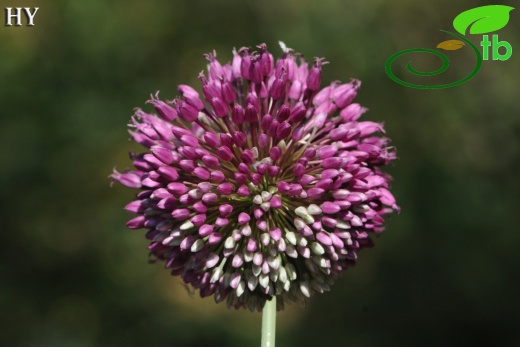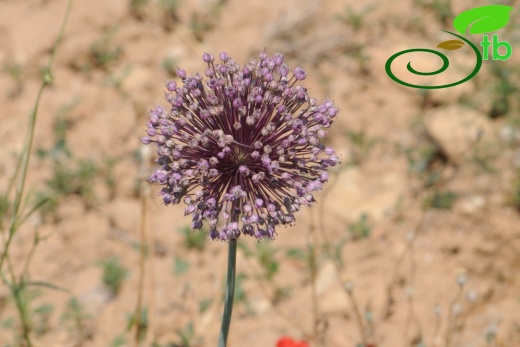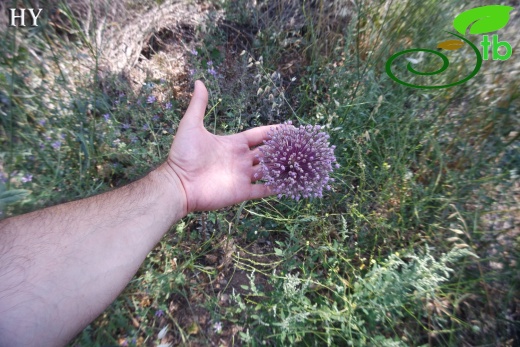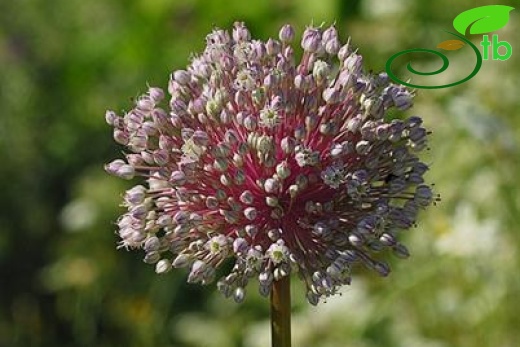Allium ampeloprasum
Allium ampeloprasum
Pırasa
Bulb broadly ovoid to subglobose, 2-6 cm diam.; outer tunics ash-grey, papery, easily split; bulblets ± spherical or helmet-shaped, 3-5 mm diam., numerous, yellowish, borne on short stalks or nearly sessile and remaining crowded close to parent bulb even after disintegration of bulb tunics. Stem 50-180 cm, stout Leaves 4-10, 5-20 mm broad, flat, keeled, sheathing lower 1/3-1/2 of stem. Spathe to 8 cm, 1-valved, long-beaked, caducous. Umbel usually globose, 5-9cm diam., many-flowered, dense. Pedicels purple, reddish, lilac or green, 20-36 mm, unequal, several times longer than perianth. Perianth cup-shaped or broadly campanulate; segments white, purple, lilac or green with or without a green midvein, 4-5 mm, not overlapping, with large sparse papillae especially around midvein or smooth; outer usually oblong, concave, subacute, inner broadly ovate, obtuse, apiculate. Filaments purple, lilac or white, somewhat exserted, ciliolate near base; inner 3-cuspidate, median cusp shorter than lateral cusps, lateral cusps thin, twisted. Anthers purple or yellow. Style exserted. Capsule 4 mm. 2n = 40. Fl. 6-7. Pinus brutia forest, macchie, scrub, cliffs and rocks, rocky steppe, olive groves, roadsides, ruins, sandy beaches, s.l.-1300 m.
N. Africa, W. & S. Europe, W. Syria, N. Iraq, Iran, Caucasia? Medit. element?





